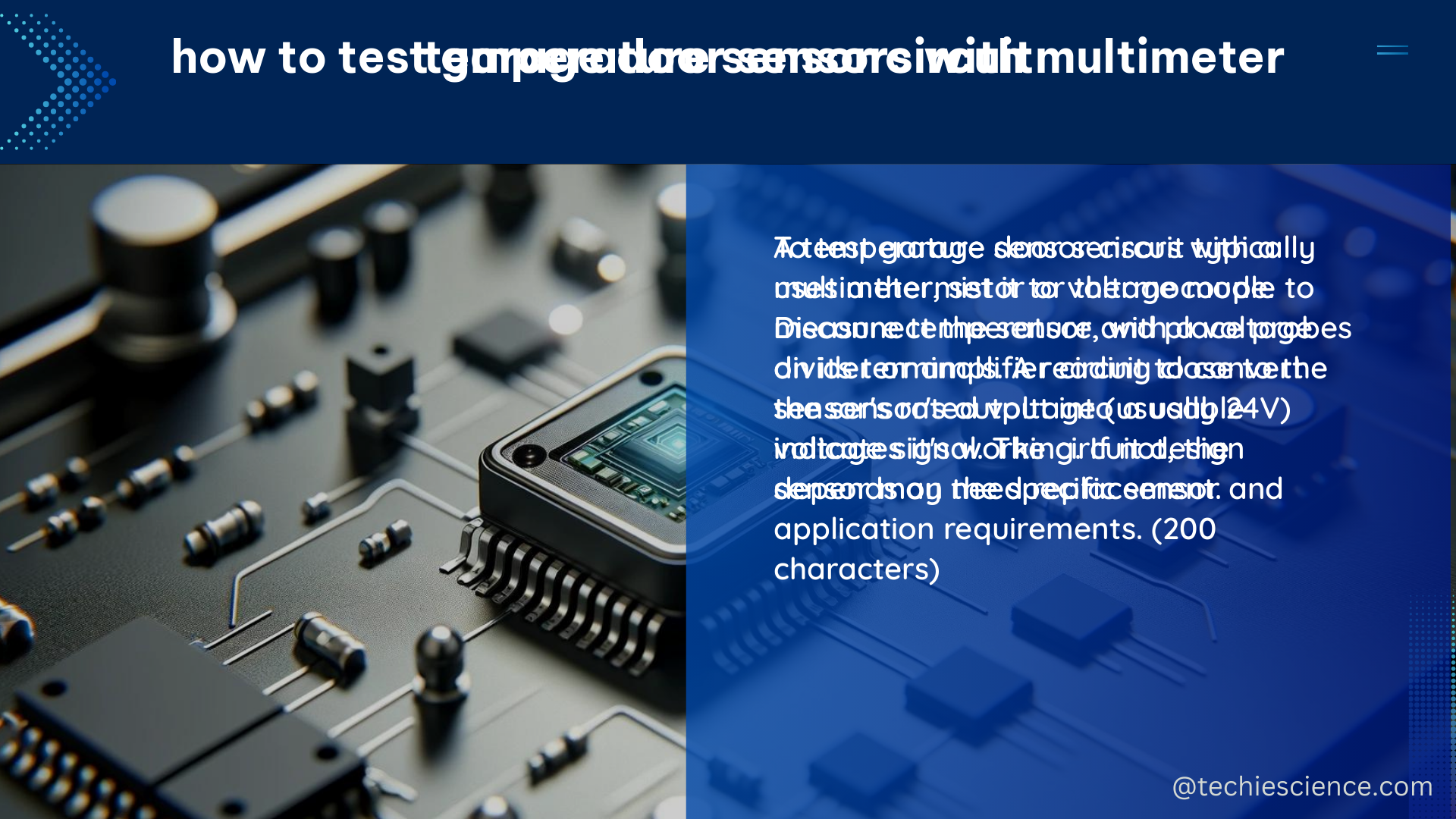Temperature sensor circuits are essential components in various applications, including data centers, network equipment rooms, and cryogenic environments. These circuits convert temperature changes into measurable electrical signals, which can be used for precise temperature control and measurement. This comprehensive guide delves into the technical specifications of temperature sensor circuits, providing a deep dive into the world of germanium resistance temperature detectors (RTDs) and semiconductor temperature sensors, as well as a detailed DIY approach to building your own temperature sensor circuit.
Temperature Sensor Circuit Technical Specifications
Germanium Resistance Temperature Detectors (RTDs)
Germanium RTDs, manufactured by Lake Shore, are recognized as “Secondary Standard Thermometers” and have been employed in the measurement of temperature from 0.05 K to 30 K for more than 40 years. These sensors have a useful temperature range of about two orders of magnitude, with resistance varying from several ohms at their upper useful temperature to several tens of kilohms at their lower temperature. Their high sensitivity provides submillikelvin control at 4.2 K and below, making them suitable for precise temperature measurement and control in cryogenic applications.
Key Specifications:
– Temperature Range: 0.05 K to 30 K
– Resistance Range: Several ohms to several tens of kilohms
– Sensitivity: Submillikelvin control at 4.2 K and below
– Recognized as “Secondary Standard Thermometers”
– Employed in temperature measurement for over 40 years
Semiconductor Temperature Sensors
Semiconductor temperature sensors are based on the change of voltage across a p-n junction, which exhibits strong thermal dependence. These sensors are often categorized by their output signal type, which can be analog (voltage and current), logic, or digital. The key advantages of this sensor type are ease of integration into a circuit, general ruggedness, and low cost. However, they have limitations in accuracy, stability, thermal chip design, and slow response time.
Key Specifications:
– Output Signal Type: Analog (voltage and current), logic, or digital
– Advantages: Ease of integration, ruggedness, low cost
– Limitations: Accuracy, stability, thermal chip design, slow response time
DIY Temperature Sensor Circuit

For a DIY temperature sensor circuit, you can use a semiconductor temperature sensor, such as a silicon diode or diode-connected bipolar transistor. Follow these steps to build your own temperature sensor circuit:
- Select a Semiconductor Temperature Sensor:
- Choose a suitable semiconductor temperature sensor based on your requirements, such as a silicon diode or diode-connected bipolar transistor.
-
Consider factors like temperature range, accuracy, and output signal type when selecting the sensor.
-
Connect the Sensor:
- Connect the sensor in a circuit with a constant current source.
- For a silicon diode, measure the voltage changes across the diode while holding the bias current constant.
-
For a diode-connected bipolar transistor, apply a constant current through the base-emitter junction and measure the generated voltage, which is a linear function of the temperature.
-
Calibrate the Sensor:
- Perform a two-point calibration to ensure accurate readings.
-
Measure the sensor’s output at two known temperatures to establish a linear relationship between the sensor’s output and the temperature.
-
Convert the Signal:
- Apply an offset to convert the signal from absolute temperature to Celsius or Fahrenheit, if necessary.
- This step ensures that the temperature readings are displayed in the desired unit.
By following these steps, you can build a DIY temperature sensor circuit that can be used for various applications, such as environmental monitoring, industrial automation, and home automation.
References
- Lakeshore Temperature Measurement and Control Catalog
- Sensing and Sensor Fundamentals – SpringerLink
- International Performance Measurement and Verification Protocol
- USG Fan Mod – Reddit

The lambdageeks.com Core SME Team is a group of experienced subject matter experts from diverse scientific and technical fields including Physics, Chemistry, Technology,Electronics & Electrical Engineering, Automotive, Mechanical Engineering. Our team collaborates to create high-quality, well-researched articles on a wide range of science and technology topics for the lambdageeks.com website.
All Our Senior SME are having more than 7 Years of experience in the respective fields . They are either Working Industry Professionals or assocaited With different Universities. Refer Our Authors Page to get to know About our Core SMEs.